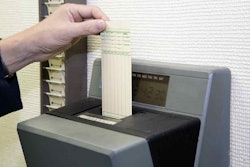 Many Californians who ripped up their lawns used their rebates to cover the xeriscaping.
Many Californians who ripped up their lawns used their rebates to cover the xeriscaping.Photo: Steve & Michelle Gerdes/Flickr
As the chances that California’s drought will end this year become increasingly slim, the Metropolitan Water District is weighing the possibility of discontinuing its popular turf removal rebate program.
The MWD Finance and Insurance Committee met a few weeks ago to discuss the budget for the next two years. Currently, none of the proposed $59 million set aside for conservation programs is intended to be used for the turf program.
The board is expected to approve a final budget in April, but it seems unlikely the plans will change by then.
“This is really a long-term transition that we’re making,” Deven Upadhyay, manager of water resource management for the Metropolitan Water District, told Southern California Public Radio. “We’re thinking about where people will be 20 and 30 years from now and what the landscape will look like in Southern California. And you don’t just get there based on paying people to remove turf. You get there in terms of changing people’s attitudes, developing greater awareness of the need for water efficiency.”
While the current conservation funding apparently won’t go toward ripping up turf, customers will be able to receive rebates from purchasing water-conserving appliances.
“It was a one-time thing to try to ramp up attention on having more drought-tolerant landscapes while we’re in the drought,” Upadhyay told the Los Angeles Times. “I don’t think it was ever envisioned as we would be able to do that every year from here on out.”
While this may be true, the unforeseen federal taxes the IRS claimed on the rebates may have been another reason why MWD is discontinuing the program. While state officials and utility managers had simply assumed water-efficiency rebates were tax free, as are most energy-efficiency rebates, they were mistaken, and those who participated in the program had to pay the price.
According to The Washington Post, without the rebates to buy drought-tolerant plants, homeowners have opted to stick with dirt yards. Kitty Connolly, executive director of the Theodore Payne Foundation for Wildflowers and Native Plants, also saw a drop in interest in native plants once the rebates dried up in 2015.
“We had lots and lots of people who found out about our organization through these turf removal programs, and there were a lot of people who came here for that explicit purpose,” Connolly said. “So it will reduce that segment of our customers and our visitors here and the people who take classes. We can already see that there are fewer people taking lawn removal classes.”
Connolly isn’t the only one disappointed with the planned discontinuation of the turf removal program. Stephanie Pincetl, a professor at UCLA’s Institute of the Environment and Sustainability, felt that the yard removal program was a step in the right direction, but feels that the program needs to be supported for more than one year.
“Landscape transformation is going to take time and dedication, and we can’t just do one-off programs and hope that it’s going to actually change the culture of landscaping in Southern California, which has evolved over a hundred years,” she said.











